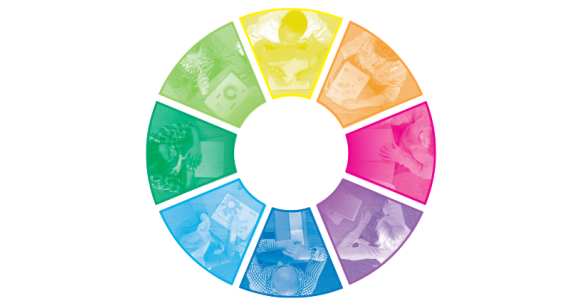
Effective team collaboration is crucial for success. The concept of Color Meetings, developed by the authors of the Team Management Profile, utilizes the Types of Work model to enhance team functionality. Each Color Meeting – Green, Yellow, Red, and Blue – addresses specific aspects of team operations, ensuring a comprehensive and balanced approach to team success.
What Are Color Meetings?
Color Meetings are a concept designed to cater to different stages of team activities. They are categorized into four types, based on the TMS Types of Work:
- Green Meetings: Focus on gathering and sharing information.
- Yellow Meetings: Dedicated to brainstorming and developing ideas.
- Red Meetings: Centered around planning and decision-making.
- Blue Meetings: Used for reviewing performance and continuous improvement.
By structuring meetings this way, teams can ensure that all aspects of their work are addressed efficiently and effectively.
Green Meetings
The Foundation of Informed Decisions
Green meetings are all about gathering and sharing essential information, laying the groundwork for informed decision-making. These meetings foster collaboration and ensure the team has a thorough understanding of the internal and external factors impacting their work. Green meetings should be scheduled as needed, typically at the beginning of projects or when new information is required.
| Green Activities | Key Derailers |
|---|---|
|
|
Yellow Meetings
The Engine of Innovation
Yellow meetings are where the magic happens. These sessions are vital for exploring and refining ideas, building support, and securing necessary resources. They encourage teams to develop innovative solutions and ensure alignment with stakeholders. Regular Yellow meetings, such as bi-weekly or monthly, help continuously develop and refine ideas.
| Yellow Activities | Key Derailers |
|---|---|
|
|
Red Meetings
The Heart of Planning and Execution
Red meetings are essential for planning, decision-making, and keeping projects on track. They help teams set clear goals, assign responsibilities, and maintain accountability, leading to efficient execution. Frequent Red meetings, such as weekly or bi-weekly, are necessary to monitor progress and address issues promptly.
| Red Activities | Key Derailers |
|---|---|
|
|
Blue Meetings
The Path to Continuous Improvement
Blue meetings are crucial for reflecting on performance, ensuring compliance, and fostering continuous improvement. They allow teams to learn from past experiences, identify areas for improvement, and maintain high standards. Blue meetings should be held at key project milestones or monthly to regularly assess progress and implement improvements.
| Blue Activities | Key Derailers |
|---|---|
|
|
The Power of a Common Language
The TMS framework helps teams develop shared mental models, enhancing communication and ensuring everyone is aligned. Color Meetings provide structure and clarity, whether the task at hand is gathering information, developing ideas, planning and executing projects, or reflecting on performance.
Implementing Color Meetings within the TMS Types of Work framework can transform team collaboration. By addressing different work preferences and ensuring all aspects of team functionality are covered, teams can achieve greater success. These structured meetings provide a clear pathway for gathering information, innovating, planning, and continuously improving, making them an indispensable tool for any high-performing team.

